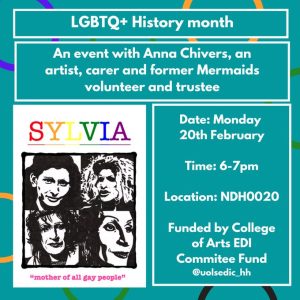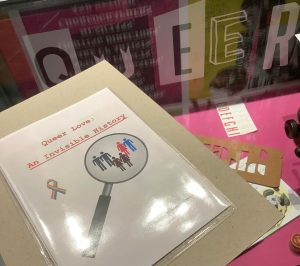By Chris Breen (Senior Lecturer, School of Health and Social Care, College of Health and Science)
In 2015 as an incidental finding at the age of 50 I found out I was intersex and had XXY Chromosomes, I was initially surprised and concerned, but the more I learned about it, the more it explained the way I looked, felt, some developmental and health issues I had experienced and why I’m now being monitored and treated for other medical conditions. Although I have had a generally healthy and happy life, it does make me wonder what difference it would have made if it had been diagnosed earlier and suspect it would affect some of my life choices.
XXY is a chromosome variation characterised by an additional X chromosome in those assigned male at birth (47, XXY) and one of 50+ intersex variations.
When Rishi Sunak said in a cheap jibe against trans people last year “a man is a man and a woman is a woman, it is just common sense” he couldn’t be more wrong and demonstrated his lack of knowledge and inbred bias.
When we talk about sex rather than gender its not as simple as a binary choice. Sex is a combination of; Chromosomal, Gonadal structures, Internal and external reproductive system, hormones, Pubertal Sex Changes, Brain Sex, Behavioural and “Cognitive” Sex.
Intersex people are born with sex characteristics (including genitals, gonads, hormone production and chromosome patterns) that do not fit typical binary notions of male or female bodies.
Intersex people like the wider population can have any gender identity and sexual orientation. However, a number are drawn to the LGBTQI+ community as they too are a marginalised group, who are often stigmatised and subject to discrimination.
Although the majority of people with XXY will identify as men, there is a number who have gender incongruence and or dysphoria or in my case gender euphoria, a celebration of the person I was meant to be and had kept hidden for most of my life.
As an institution as part of our ongoing programme of decolonising the curriculum we need to look outside our borders to the wider world and how they respect intersex and transgender people. In many countries intersex or a third gender is legally recognised on passports and other legal documents. And in other countries subsets of the population who live in a gender that differs than that assigned at birth are accepted and sometimes hold a place of reverence in their culture, Examples of this include; Argentina, Austria, Australia, Bangladesh, Canada, Colombia, Denmark, Dominican Republic, Germany, Iceland, India, Indonesia, Indigenous people of North America, Ireland, Malta, Madagascar, Mexico, Nepal, Netherlands, New Zealand, Oman, Pakistan and Samoa.
Now I do what I can to advocate for all intersex people regardless of their identities.
Bibliography
Davis, G (2015) Contesting intersex : The dubious diagnosis. [ebook]. New York: NYU Press (Biopolitics: Medicine, Technoscience, and Health in the 21st Century). Available from https://search.ebscohost.com/login.aspx?direct=true&db=e000xww&AN=1020827&site=eds-live&scope=site [accessed 9 February 2024].
InterACT (2024) Intersex variations glossary. Sudbury, MA, US: InterACT. Available from https://interactadvocates.org/wp-content/uploads/2022/10/Intersex-Variations-Glossary.pdf [accessed 9 February 2024]
Klinefelter’s Syndrome Association (2024) Available from https://www.ksa-uk.net [accessed 9 February 2024]
McKenzie, K (2023) Sexual differentiation of the nervous system [Lecture]
Prevet, S. E (2003) Intersex and identity. The contested self. London: Rutgers University Press.
Taylor, O (2018) 10 societies that recognise more than two genders. Listverse. Available from https://listverse.com/2018/10/03/10-societies-that-recognize-more-than-two-genders/ [accessed 9 February 2024]
Turners Syndrome Support Society (2024) Available from https://tss.org.uk/ [accessed 9 February 2024]
United Nations Human Rights (2024) Intersex. United Nations Human Rights. Available from https://www.unfe.org/wp-content/uploads/2018/10/Intersex-English.pdf [accessed 9 February 2024]
Walker, M. (ed.) (2018) Interdisciplinary and global perspectives on intersex. Basingstoke: Palgrave Macmillan.

